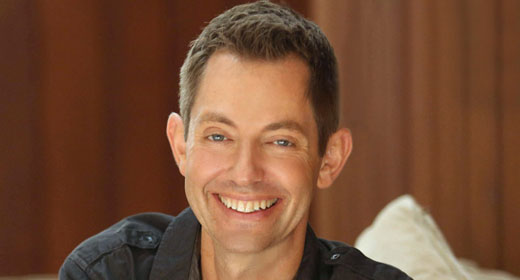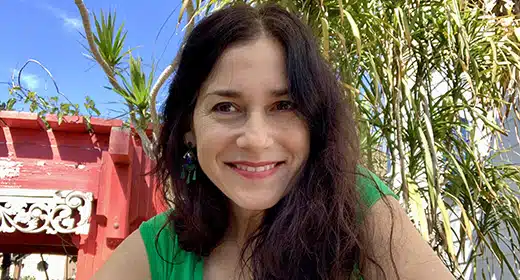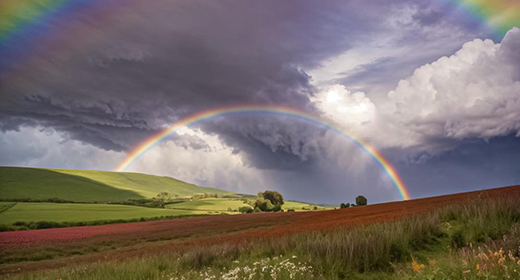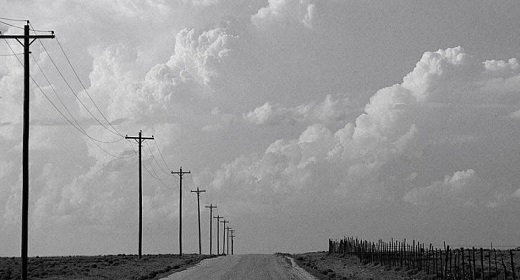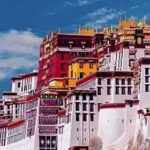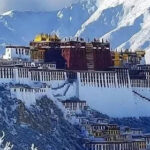by Roshi Joan Halifax: The Large Sutra on Realizing Wisdom Beyond Wisdom marks a vital shift from early Indian Buddhism to the Mahayana vision

that began to take root in China near the beginning of the first millennium of our Common Era. Until the Great Prajna Paramita, Buddhist practitioners typically relied on the presence of an external teacher, a particular buddha, to show them the way. The Great Wisdom Beyond Wisdom Sutra, however, pointed to an approach that was revolutionary, which directed the practitioner toward the mind as the teacher, a mind embedded in the boundlessness of the present, the original sutra of all sutras.
The Sutra affirms that this boundless mind is Buddha, none other than Buddha, a mind that is everywhere and nowhere, a mind that is both timeless and in the embrace of this moment, a mind that has realized life as eternal. It belongs to no one and to everyone and is a bond of vastness that brings all beings into a unity. From this perspective, then, how could a historical personage be our ultimate teacher? Our ultimate teacher is this boundless mind itself embedded in all beings and things.
Some six hundred years later, what we now know as the Heart Sutra or the Heart of the Teaching on the Perfection of Wisdom Beyond Wisdom emerged. It is a brilliant condensation of the long Wisdom Beyond Wisdom Sutra. The origins of the Heart
Sutra are hidden in the mists of time, yet to be sure, its origin is in the boundless mind itself.
The Heart Sutra is a victory chant that celebrates this boundlessness and the mind’s potential to realize wisdom beyond wisdom. It is a paean to fearlessness and affirms that this vast and fearless mind is your mind and my mind. It is the very source of our freedom, the root of our wisdom, the place where we suffer and are liberated from suffering. Including both suffering and freedom from suffering, this mind is wisdom beyond wisdom itself, the great Prajna, the Mother of All Buddhas, the mother of awakening.
Chanted by Mahayana Buddhist practitioners for over a thousand years, the Heart Sutra articulates the profound insight that there is no inherent and abiding self. Without an inherent self, something to rely on, an identity that is abiding, the body and mind are experienced as everything and boundless, an all-at-onceness that is fundamentally inclusive and free, without an inherent self or identity to bind them. When one has realized this “all-at- onceness”, this experience of boundarilessness and boundlessness, we become the Mother of All Buddhas, the great prajna, herself. Another way of saying this is that this boundless mind gives birth to our experience of awakening.
The title of the sutra is Maha Prajna Paramita Hridaya Sutra. The Sanskrit word Prajna, sometimes translated as wisdom, or wisdom beyond wisdom, or mother wisdom, reflects the light of the realization of boundlessness. Prajna Paramita is often referred
to as the Mother of All Buddhas. A Buddha is an awakened being. So prajna is the experience of the awakened mind that is characterized by inclusiveness and boundarilessness.
The two words Maha Prajna take prajna even further. From the Sanskrit, pra gives emphasis to the jna, or wisdom, but maha leads us to sense that this wisdom is really beyond wisdom. Thus we say that Maha Prajna means wisdom beyond wisdom.
Also in the title is the Sanskrit word paramita, often meaning “other shore” or perfection. “Other shore” refers to the shore of liberation, as distinct from the shore of suffering. We know from the teachings of the Buddha, however, that the “other shore” is nowhere but here in this very moment. It includes our suffering and our liberation. Our awakening is here in this very moment, this boundless moment, where all the sutras are born.
Going further with this notion, most Mahayana Schools view samsara and nirvana as two sides of the same coin. That is to say that this ordinary, everyday life, the life of delusion and happiness, and the life of freedom and suffering are not separate but an undivided reality. The second translation of paramita, perfection, implies that this very moment is complete as it is, or is as it is.
The second to the last word in the title, hridaya, means heart, as in essence, pith or core. This means that the boundless realization of wisdom beyond wisdom is the very core of
awakening, the ground, essence, or heart of our liberation. The heart of wisdom then is beyond wisdom.
The last word in the title is sutra, which means teaching, or thread, that which sews the edges together. When the word sutra is used in Buddhism, it usually means that this is a direct teaching of the historical Buddha. The word sutra then implies that the teachings of the Buddha unify the world. The title of this sutra thus can be said to mean: The Heart of the Teaching on the Perfection of Wisdom Beyond Wisdom.
•
As the Sutra opens, we might ask: Where is the Buddha? Why is it that Avalokiteshvara speaks instead of the World Honored One? Why is it that the deliverer of the Sutra is the Bodhisattva of Compassion?
In the long version of the Sutra, the Buddha is sitting in deep meditation, in a state of “perception of the profound” or in a direct experience of boundlessness. He is found at Vulture Peak in Rajghir surrounded by a great assembly of monks and Bodhisattvas. Near him are two characters: Avalokiteshvara, the Bodhisattva of Compassion, and the learned monk, Shariputra. In front of this great gathering of Noble Ones, Shariputra asks: “How should a son (or daughter) of good lineage train who wishes to practice the profound perception of wisdom?”
The Buddha does not respond directly. He sits in silence, being the very manifestation of wisdom beyond wisdom. But for us, and for Shariputra, words are offered that shed light on the
experience of mother wisdom exemplified by the Buddha. So from the mouth of the compassionate Bodhisattva Avalokiteshvara flows astounding teachings that open the great dharma door of boundlessness, that is wisdom beyond wisdom.
Using Avalokiteshvara as his voice, the Buddha speaks from the dimension of the absolute or ultimate through the relative in the guise of compassion. This gives us some feeling for the truth of the interdependence of the relative of compassionate Avalokiteshvara and the Absolute of the silent liberated Buddha. It also suggests to us that wisdom cannot be separated from compassion, and compassion is the very heart of wisdom beyond wisdom.
In the short version of the sutra that is chanted by Zen Buddhists, Avalokiteshvara is the first word we read or hear. The name of the Bodhisattva of Compassion is a thundering opening, guiding us to see that wisdom beyond wisdom is compassion itself, and compassion is none other than wisdom beyond wisdom. Indeed, Avalokiteshvara is the perfect compliment to the content of the Sutra, for Avalokiteshvara’s presence implies that when suffering is transformed through compassion wisdom beyond wisdom arises.
The presence of Avalokiteshvara, the Bodhisattva of Compassion, as the teacher of The Sutra of Realizing Wisdom Beyond Wisdom, thus reminds us that wisdom and compassion can be seen as inflections of each other. By opening the Heart Sutra, Avalokiteshvara embodies the two accumulations of wisdom and
compassion. We are invited to discover that wisdom beyond wisdom is no other than compassion and boundlessness. The absolute and relative are inseparable, and in a nondual relationship similar to a wave and water. We cannot separate wisdom from compassion, just as we cannot separate the wave from the water. The essence of this nonduality is boundless.
•
A little later in the Sutra, we come upon the key Sanskrit term Shunyata. This word is complimented with the Sanskrit word …. which is commonly translated as form. By form, we mean the world of the relative, the very thingness of things.
The word Shunyata has been commonly translated in English as emptiness. Yet Kazuaki Tanahashi and I affirmed the translation of the Sanskrit term Sunyata as boundlessness, a word that points to a mentality that cannot be captured, described, or limited. Boundlessness has a flavor that is different than the taste of emptiness. It points to a process of mind rather than a state of mind. Emptiness feels like a destination. Boundlessness has a living quality where there is no destination.
We can look to the symbolic expression of the absent presence of the Buddha for a hint of what Shunyata might mean. Hundreds years after the death of the Buddha, his presence was transmitted though images of his boundlessness: the openness of his footprints carved into stone, an impression of the great and boundless invisible; the boundless absence of his presence under the Bo tree; the dharma wheel reminding practitioners of his
teachings but pointing to something far greater than his personal identity.
The Buddha’s absence as a presence, other than his teachings, was itself a teaching on signlessness, one of the Three Doors of Liberation, which includes boundlessness, signlessness, and aimlessness. All three of these dharma doors are a fundamental teaching on boundlessness, just as all three are teachings on signlessness and aimlessness; for boundlessness is without any identity nor does it have an aim. Aimlessness points to the boundless present as the destination that is no destination at all, for we are indeed very here. And signlessness means that things are not bounded by the plague of identities; rather they are free from description when directly experienced.
Even one of the Buddha’s names: Tathagata, the One Thus Gone (or The One Thus Come), reminds us that he has gone beyond (Gate, gate), beyond the opposites of being and nonbeing, of the relative and absolute. Another way we can say that he has “gone beyond” is that he has arrived in the boundless present and is free of all identities yet inclusive of all particularities. He is even free of his own identity as Buddha, and is simply the very process of awakening itself exemplified by being buddha.
The use of the word boundless for Shunyata might challenge some practitioners’ and translators’ ideas. It was Kaz, who discovered this perspective on Shunyata. When I proposed it to various Buddhist teachers, there was understandable resistance. Some of them indicated that they have become accustomed to
the word emptiness as a way of expressing Shunyata or our experience of so-called Shunyata.
Indeed, emptiness, voidness and nothingness are concepts that are mathematically and philosophically articulated; however, reaching into the experience of practice, the word boundlessness might express more accurately the mental experience of cessation and all-at-onceness, ie boundlessness: boundless as in vast, and boundless as in the experience of interconnectedness. Here the relative and absolute are simultaneously actualized in our mental experience as a dynamic process.
Exploring why boundlessness works better for me than emptiness takes me also to my work with dying people. I have offered the Heart Sutra to dying people for many decades. My test for something working is how it may be received by someone facing death. I have said the words: “form is emptiness” to many dying people over the years, but something in me has always been uneasy with this particular aspect of the sutra. When Sensei offered his insight regarding Shunyata as boundlessness, something profound shifted not only in my practice but in my sense of the rightness of using this word with someone with a dying person.
We see that space is boundless and without boundary; this is the wondrous freedom of openness, no hindrance, our natural freedom, the spirit and mind of inclusiveness. And our connection with all beings and things is boundless and without boundary as well; this is the wonder of our interdependence,
how we live in a seamless world of connections, Indra’s net: each jewel reflecting the light of all others, held together in a weave of space and connectivity. Our mind is boundless space; our lives are boundless connections. Realizing this as you are dying could indeed be liberating.
By renewing the teachings of the Buddha through the use of word boundlessness, the Heart Sutra can liberate us from all the hindrances, including the hindrance of enlightenment or awakening. Realizing boundlessness is a sword that cuts the root of self-clinging. If there is no self to become enlightened, then enlightenment, awakening is not something to get but the essence and atmosphere of our basic nature, including the consequential and ever-changing interrelationships of all phenomena in our experience.
Realizing boundlessness, the five fears are ended. The five fears include losing one’s life, mind, reputation, support, and fear of teaching. There is no life, mind, reputation or support to lose. There is nothing to teach, no one to teach, no one teaching. There is simply freedom from fear. This is the essence of the Heart Sutra, its power to free you and me from fear through the realization of great boundlessness.



